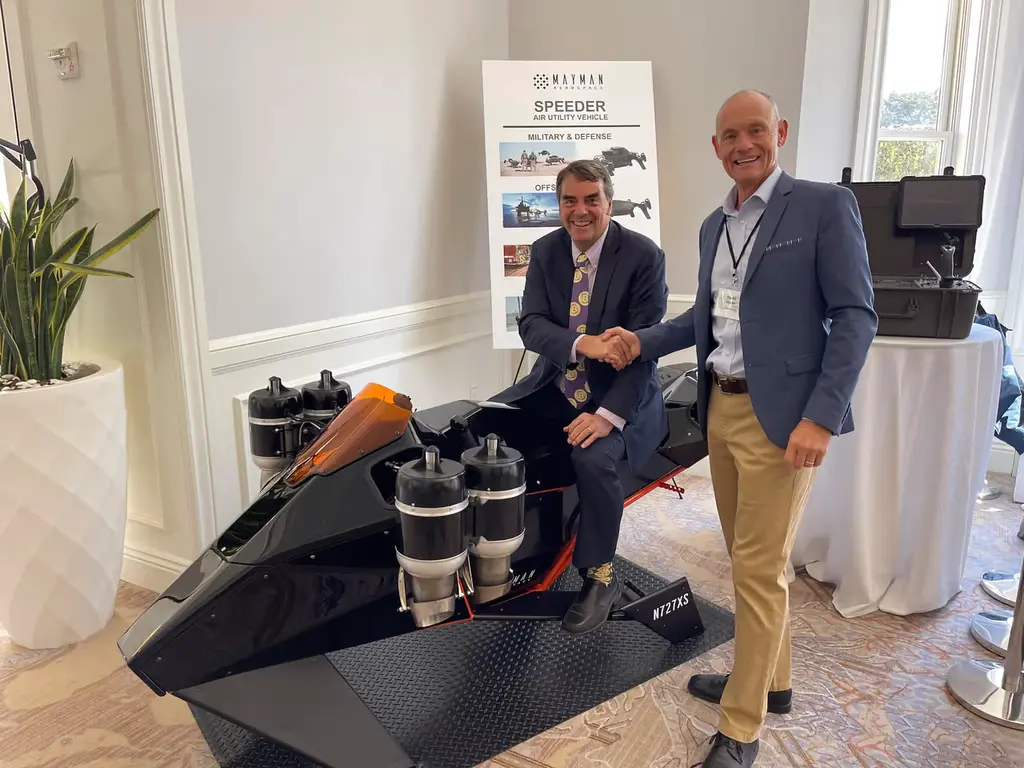After shifting the main focus from jetpack to speeder air utility vehicle (AUV), jetpack aviation recently demonstrated the latest R & D achievement - P2 speeder prototype At the CEO Summit of Draper Venture Network in California, the prototype made its debut under the Mayman Aerospace brand, which aims to develop a micro VTOL speeder to adapt to a variety of applications.

The speeder P2 is about the size of a motorcycle and is the company's third full-size prototype. It is powered by eight jet engines operating on conventional zero net carbon or sustainable aviation fuel (SAF), with a carbon fiber fuselage and an ergonomic pilot position, designed to achieve aerodynamic performance to maximize flight efficiency.
Safety is obviously also a major concern, and its proprietary on-board computer system can immediately rebalance engine thrust in the event of engine failure. Ease of use is also a primary consideration. The purpose of entering the air is as simple as jumping on and pressing the start button.

Although the prototype on display is manned, the speeder is modular and can be configured to fly automatically or remotely. Although it is aimed at police, rescue and military applications as a small VTOL personal aircraft, autonomous or remote control configuration will greatly expand the potential applications of the aircraft.
Such applications include fire fighting, which can carry flame retardants in fast loaded double cans, dump or spray the contents on rugged terrain or tall targets as needed, and emergency medical evacuation. Patients can be tied to fast removable garbage for rapid transportation to hospitals. It can also be used for industrial cargo transportation, and can fly 400 miles (644 kilometers) in cargo mode at a speed of more than 500 miles / h (805 kilometers / h), while carrying a load of up to 1000 pounds (450 kilograms).
The company said it was working with the Federal Aviation Administration to get speeder certified, and was conducting in-depth discussions with potential customers in the fields of defense, key cargo, forest fire protection and disaster relief. The initial remote control flight test of the latest prototype is planned to begin in the third quarter of this year, and the pilot test is planned to be carried out near the end of the year.